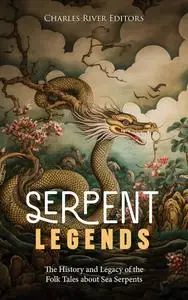Serpent Legends: The History and Legacy of the Folk Tales about Sea Serpents by Charles River Editors
English | December 19, 2023 | ISBN: N/A | ASIN: B0CQPXZ5KJ | 97 pages | EPUB | 9.86 Mb
English | December 19, 2023 | ISBN: N/A | ASIN: B0CQPXZ5KJ | 97 pages | EPUB | 9.86 Mb
People have always been fascinated with the hidden, the mysterious, and the unexplained. Every society has its tall tales and ghost stories, its odd legends, and heroes. Also, every society has its stories of strange beasts, dangerous or benign, that live in the twilight world between the everyday and the legendary. Through most of history, people have been closely tied to nature, hunting in forests and having an intimate knowledge of the animals in their regions. So-called “primitive” peoples were walking encyclopedias of the natural world, and yet most believed there were more creatures lurking in those woods than the ones they usually encountered. Even as the world becomes more connected, the belief in strange creatures continues as strong as ever.
Indeed, the willingness to believe in exotic animals has been so widespread that some have made careers out of displaying “oddities” to the public at circuses, fairs, and museums. Perhaps the most notorious individual to do this is P.T. Barnum, whose New York City museum was so popular in part because he was more than happy to invent items with which to fascinate the public, even if no such item actually existed. His first example of this was the now famous “Fiji mermaid.”
Although cryptozoology is often scoffed at and widely considered a pseudoscience, one of the reasons it made men like Barnum rich and continues to fascinate people today is the fact that people realize they’ve only scratched the surface when it comes to identifying all the different forms of life on Earth. As Martin DelRio pointed out in The Loch Ness Monster, “Animals previously unknown to science have been found more than once in the past hundred years. For instance, there's the megamouth shark (megachasma pelagios), a fifteen-foot-long creature weighing nearly a ton. The first specimen was discovered on November 15, 1976, when it was found entangled in the drag anchor of a U.S. Navy ship. The new creature wasn't described scientifically until 1983…The megamouth remains the only species in its genus, and the only genus in its order.” The Peruvian beaked whale (Mesoplodon peruvians) was discovered the same year as the megamouth shark and not formally described until 1991. Very little is known about this small species of whale that has only been seen off the west coast of Central and South America. Even more poorly known is the Spade-toothed whale (Mesoplodon traversii), which was first documented in 1872 thanks to the discovery of a partial jaw in New Zealand. It wasn’t recognized as a distinct species until a partial skull was found in 1986, and no complete body was found until two specimens washed ashore in New Zealand in 2010. The fact that an entire species of whale is known to exist and yet no one has ever seen one alive adds fuel to the imagination of any monster hunter, who insists that there may be even more intriguing unknown species waiting to be discovered.
Of course, the most famous serpent of them all supposedly dwells in Scotland. While cryptids like Bigfoot and the Yeti have become popular in recent decades, none of them can touch the notoriety of the Loch Ness Monster, a large, unknown creature allegedly living in a loch in the Highlands of Scotland. Was it a relic dinosaur or perhaps an entirely new species? New photographs and new eyewitness sightings fueled a growing debate and transformed the Loch Ness Monster, also known as Nessie, into an instantly recognizable staple of pop culture, to the extent that hundreds of thousands of visitors came to Loch Ness every year in hopes of catching a glimpse of the loch’s famous inhabitant.
The Loch Ness Monster remains an international brand and the best-known cryptid in the world, but after almost 100 years of fame and media attention, what do people really know about this cryptid, and is there any proof that there really is something large and unknown living in a remote Scottish loch?



